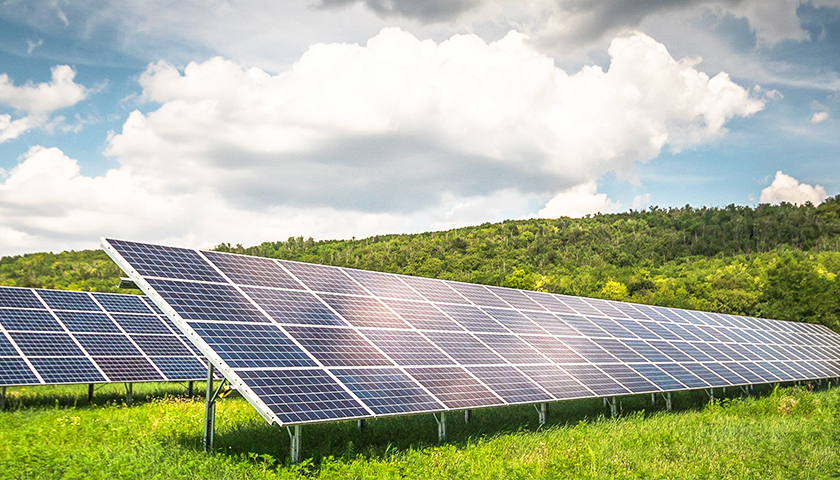by Iddo Wernick
In the context of the massive attention paid to climate change, nations around the world have committed to substantially reducing and even eliminating their carbon emissions by 2050. Achieving these goals relies on several ‘green’ technologies that would form the basis of a future energy system. As envisioned, mass deployment of these technologies will encounter fundamental physical limits that call into question their ability to function as replacements for their equivalents in the current energy system. By placing firm targets, nations around the world have committed to terminating their carbon dioxide emissions by 2050 to offer confidence that a better world is achievable if only society implements the right policies and employs the correct technologies. This assumption is inaccurate, based on a view that is at odds with nature.
Due to unavoidable physical constraints, future green technologies offer little promise for achieving economies of scale. Many of the improvements suggested to improve their performance remain marginal and frequently come with the environmental costs of additional embedded energy requirements, extensive land use and greater material complexity. The outcomes achieved under laboratory conditions are not guaranteed to be viable at the scale necessary for them to make a significant difference.
Efforts to improve energy efficiency remain essential, but those efforts are not likely to reduce aggregate energy use. The vehicles and appliances of 2050 will likely be more efficient than those of today, but precisely because of their greater efficiency there will be many more of them. Under almost any scenario, global electricity demand will increase between now and 2050 and meaningful reductions in carbon emissions will need to come from changes in the primary energy supply.
The technological vision implied by national pledges for a carbon neutral 2050 assumes that future societies will be able to: 1) Harvest nearly all the energy society uses directly from renewable natural sources (sun, wind, currents, waves, vegetation); 2) Store large amounts of electricity over long periods, and 3) Collect carbon dioxide molecules from mixed gases and dispose of them. A further implied assumption is that governments and citizens will be willing to pay the costs of environmental externalities independent of their cost, including the costs of avoiding a predicted climate disaster.
Technologies designed to capture the radiant energy of the sun or the kinetic energy of the wind must accommodate the inherent randomness of these sources. Nature’s tendency to favor disorder over order (i.e., the 2nd law of thermodynamics) complicates the goal of extracting net energy from sources that rely directly on meteorological conditions. Moreover, the engineering devices deployed to convert these sources into electricity are subject to physical laws that limit their practical efficiency actually converting solar radiation and moving air into useful energy.
Centuries of searching for chemically compatible materials for a battery that can store significant energy, charge quickly, sustain many charge-discharge cycles, and do so safely and reliably have yielded batteries capable of powering appliances but still not well suited to powering vehicles or electric grids. Todays’ electric cars use a considerable amount of energy to transport their own battery packs. Utility scale batteries require massive capital outlays for equipment that offers hours, not days, of storage capacity. Huge economic rewards await those who can solve the technical puzzle of safe, reliable, energy dense batteries, but so far this object remains elusive.
The technical problem of reliably removing carbon dioxide molecules from a mixed gas has been solved. Nonetheless, the removal process requires significant energy that reduces the net amount of useful energy generated when burning hydrocarbons. After decades of research and development, removing CO2 from a post combustion waste stream still requires 20-30% of the total energy generated under ideal conditions.
Clever engineering can finesse technical challenges but cannot overcome fundamental forces of nature. The technologies proposed for meeting future carbon-neutral energy commitments rely on manipulating materials and energy at increasingly microscopic scales. Typically, proposed technologies rely on employing sophisticated control systems or highly engineered materials that improve efficiency outcomes. However, even pilot-scale advances in green energy technologies may offer little proof of their success when scaled up to mass production and consumption as the same strict tolerances and controlled conditions become more difficult to achieve.
Successful technologies may not succeed instantly and need to emerge over time, but their success cannot be forced by government fiat or the mandates of Five-Year Plans. Widely diffused technologies generally exploit sound scientific principles that benefit the humans they are intended to serve. They offer economic benefit by adding value to goods and services that consumers are willing to pay for. They typically rely on some scientific phenomenon that can be enhanced through the diligence of engineers to innovate in applying it. For example, engineers have learned to control how we burn fuels to create optimal conditions for efficient heat generation and heat transport in power plants, homes and vehicles. The history of growth in digital processing and communication similarly relies on repeatedly exploiting basic principles in solid state physics with greater and greater engineering skill.
Confidence that green technologies can scale to dominate national energy systems remains based more on marketing claims than on demonstrated operational experience. The national goals set for 2050 present a supreme technological challenge to reduce environmental fallout while raising living standards for billions around the globe. Neither rich nor poor nations can afford to invest in technologies that achieve questionable benefits at the expense of accessible, reliable energy services for its citizens. Technologies that do not scale are destined to remain boutique technologies, the purview of the rich, environmental activists, and politicians that seize upon them to make empty promises.
– – –
For nearly three decades, Dr. Iddo Wernick has worked on measuring and analyzing how technology systems influence societal resource consumption and the natural environment. He is currently a Senior Research Associate at The Rockefeller University’s Program for the Human Environment.
Photo “Solar Panel” by Zsuzska321.




